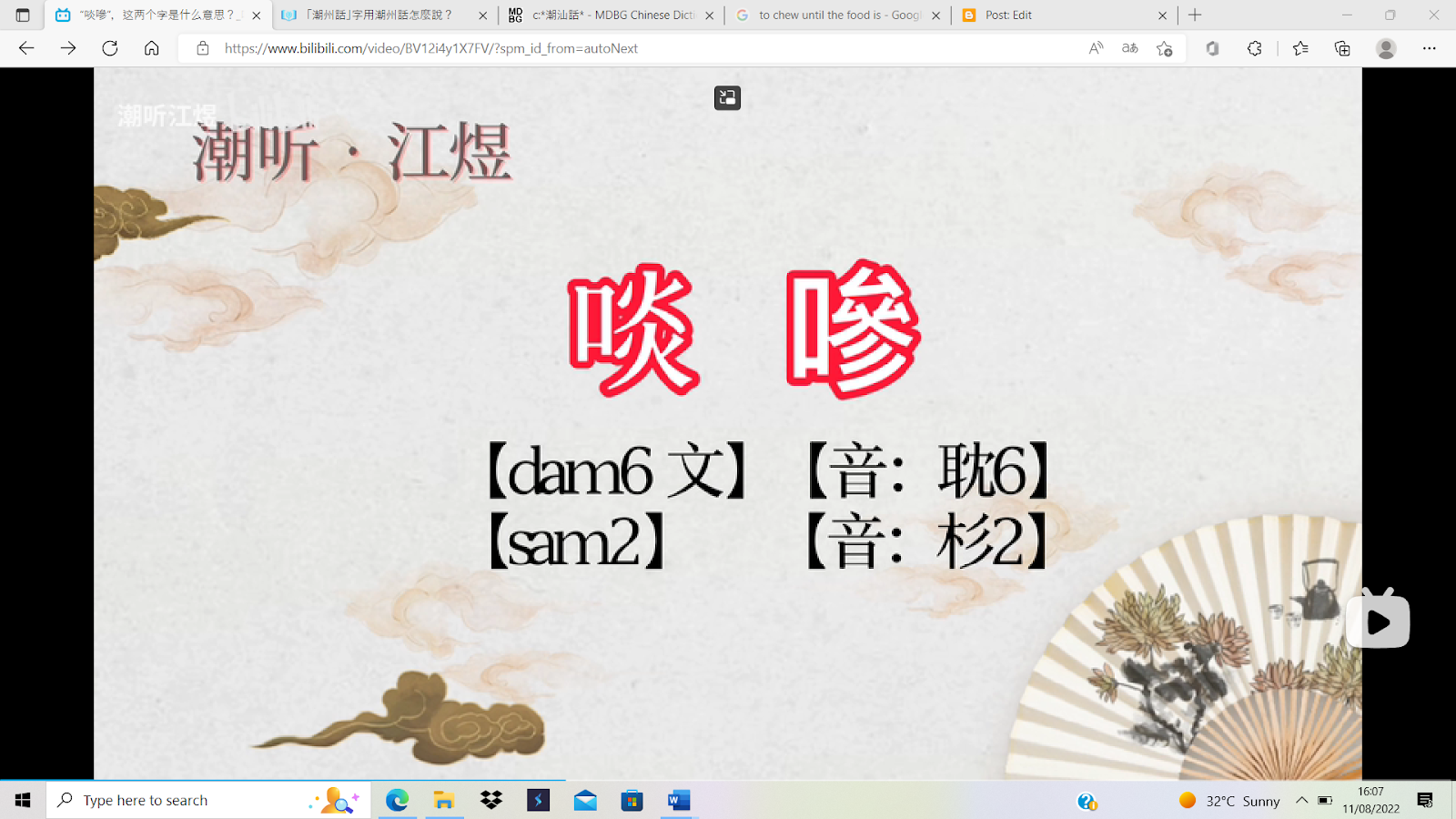Let me share with you one of the videos which I have used today.
I have written the notes below so that you can follow what was said in the
video.
|
u6siang1si5
dou2 iao1 kung3 mên2mên2 cuê7 muêh8gian6
lai5 dam6sam2 |
|
有相時肚夭困猛猛覓物件來啖糝。|有相时肚夭困猛猛觅物件来啖糁。 |
|
Sometimes
(one) is relatively hungrier; quickly find something to fill the hunger. |
dam6 means to eat
sam2 rice grains which has already been cooked
|
bou7
iao1 mi5 |
|
餔夭糜。|哺夭糜。 |
|
To
chew until the food is relatively into a fine paste. |
Do note that the traditional character for bou7 is different
from bu6.
|
bu6ru2
|
哺乳 |
to
breastfeed, to suckle |
|
bu6iog8
|
哺育 |
to
feed, to nurture, to foster |
We see this iog8 in ga3iog8 教育 as to mean to teach or to
educate.
|
zuh4 |
嘬 |
to
suck |
|
nou5gian2
zuh4 ni6 |
孥囝嘬奶 |
to
breast feed a baby |
When gian2 is referring to a person’s baby, I always
use 囝 and when it is referring to a
baby animal or something small, I always use this character 仔
and this was taught by Ty Lim from the American Gaginang
organisation when they had a forum to teach English speakers to learn Teochew Uê.
The other point is that we call babies and children nou5gian2.
|
am6
|
唵 A 唅 |
opening
a person’s mouth to place food into (the mouth) and then closing the mouth |
Zhang Xiao Shan uses this character 唅
for am6 and Lim Lung Lung uses this character 唵。
The final point I want to make is that the guy speaking in the
video has a Teochew City accent. I really love listening to people with Teochew
City accent. It is really a very beautiful accent which is very pleasing for my
ears.

No comments:
Post a Comment